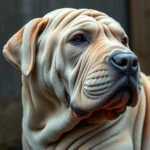
Introduction
Dog breeds are fascinating, each with its own unique characteristics, history, and charm. Among these breeds, the Dachshund stands out for its playful personality and distinctive appearance. Known for their long bodies and short legs, Dachshunds come in various colors and patterns, one of the most striking being the brindle coloration. This article delves into the allure of brindle Dachshunds, exploring their history, traits, care requirements, and much more.
Understanding Dog Breeds
Definition of Dog Breeds
A dog breed is a specific group of domestic dogs with particular characteristics that distinguish them from others. These traits can include size, coat type, temperament, and purpose. Understanding these characteristics is essential for potential owners to find a breed that fits their lifestyle and expectations.
Popular Dog Breeds
There are thousands of dog breeds globally, each with its unique history and traits. Some of the most popular include:
- Labrador Retriever: Known for their friendly nature and intelligence.
- German Shepherd: Valued for their loyalty and versatility in various roles.
- Bulldog: Recognizable for their distinctive wrinkled face and calm demeanor.
In contrast, the Dachshund, with its unique shape and lively personality, has carved a special niche among dog lovers. This breed showcases an incredible variety in size, temperament, and purpose, making it a versatile choice for many families.
The Dachshund Breed
History of Dachshunds
The Dachshund originated in Germany, where they were bred to hunt badgers and other small animals. Their long bodies and short legs allowed them to dig into burrows and flush out prey. Over time, they transitioned from hunting companions to beloved family pets.
Characteristics of Dachshunds
Dachshunds come in two sizes: standard and miniature. Standard Dachshunds weigh between 16 to 32 pounds, while miniature Dachshunds weigh 11 pounds or less. They exhibit three coat types:
- Smooth: Short, shiny coats that require minimal grooming.
- Long-haired: Soft and flowing, these coats need regular brushing to prevent matting.
- Wire-haired: Coarse and bristly, these coats require occasional trimming.
In addition to their physical traits, Dachshunds are known for their spirited and curious personalities. They are affectionate, intelligent, and often exhibit a strong will, which can make training a bit of a challenge.
Types of Dachshunds
When considering a Dachshund, it’s important to understand the differences between the two main types:
- Standard Dachshund: Larger and often more robust, they are typically used for hunting.
- Miniature Dachshund: Smaller and more delicate, these dogs are primarily kept as companions.
Regardless of size, all Dachshunds share a strong personality and a penchant for digging, making them both endearing and entertaining companions.
Brindle Coloration in Dachshunds
Understanding Brindle Pattern
The brindle coloration is characterized by a mix of light and dark stripes, creating a unique and eye-catching appearance. This pattern can vary widely among individual dogs, resulting in a stunning array of brindle designs.
Genetically, the brindle pattern is produced by a specific allele that affects the distribution of color in a dog’s fur. While it’s not exclusive to Dachshunds, the presence of brindle in this breed is relatively rare, contributing to its allure.
Rarity of Brindle Dachshunds
Brindle Dachshunds are not commonly found compared to other color patterns. The rarity of this coloration makes them particularly sought after by enthusiasts and collectors. In the broader world of dog breeds, brindle is more frequently seen in breeds like the Boxer and Greyhound, which can make a brindle Dachshund a unique addition to any household.
Recognizing Brindle Dachshunds
Identifying a brindle Dachshund can be quite straightforward once you know what to look for. The typical appearance features:
- Striped Pattern: A combination of dark stripes over a lighter base color, often tan or cream.
- Varying Shades: The shades can range from light fawn to deep mahogany, which adds to the individual charm of each dog.
When looking for a brindle Dachshund, ensure you’re aware of these patterns, as they can vary significantly between individual dogs.
Caring for a Brindle Dachshund
General Care Requirements
Caring for a brindle Dachshund involves understanding the breed’s specific health considerations. Dachshunds are prone to certain health issues, notably intervertebral disc disease due to their elongated spine. Regular check-ups with a veterinarian can help catch potential problems early.
Feeding a balanced diet is crucial. High-quality dog food that caters to their size and activity level is essential. Always consult with a veterinarian to ensure you’re providing the best nutrition for your dog’s needs.
Grooming Tips
Grooming requirements can vary based on the coat type:
- Smooth Coats: These require minimal grooming but benefit from occasional brushing to reduce shedding.
- Long-haired Coats: Regular brushing (at least once a week) is necessary to prevent matting and tangles.
- Wire-haired Coats: These may need professional grooming every few months to maintain their texture.
Regardless of coat type, regular ear cleaning and nail trimming should be part of your grooming routine to keep your brindle Dachshund happy and healthy.
Exercise and Activity Needs
Dachshunds are active and curious dogs that need regular exercise to stay healthy and happy. Daily walks, playtime, and mental stimulation are crucial. Engaging in games like fetch or hide-and-seek can also be beneficial. Because of their hunting background, providing toys that mimic prey can satisfy their natural instincts.
Training a Brindle Dachshund
Importance of Early Training
Early training and socialization are essential for any dog, especially for Dachshunds. These dogs can develop stubborn streaks if not guided properly from a young age. Early exposure to various environments, people, and other animals can help them become well-rounded pets.
Effective Training Techniques
Positive reinforcement is the most effective training method for Dachshunds. Rewarding good behavior with treats, praise, or playtime helps reinforce desired actions. Consistency is key, as is patience, given their sometimes strong-willed nature.
Common challenges include house-training and digging, which can be managed with consistent routines and redirecting their energy into acceptable behaviors.
Behavioral Traits to Watch For
Dachshunds can exhibit specific behaviors that may require attention:
- Barking: They may bark more than other breeds, often as a form of communication or alerting.
- Digging: This instinctual behavior can lead to unwanted digging in gardens or yards.
- Separation Anxiety: Dachshunds are known to form strong bonds with their owners, which can lead to anxiety when left alone.
Understanding these traits can help owners manage them effectively, ensuring a happy and harmonious home.
Health Considerations for Brindle Dachshunds
Common Health Issues
Dachshunds are prone to some breed-specific health concerns, including:
- Intervertebral Disc Disease (IVDD): A significant risk due to their elongated spine, IVDD can lead to severe back issues.
- Obesity: Their love for food can make them prone to weight gain, which exacerbates other health issues.
- Dental Problems: Regular dental care is essential as they can be prone to dental diseases.
Regular Veterinary Care
Routine veterinary check-ups are crucial for maintaining a brindle Dachshund’s health. Vaccinations, dental cleanings, and preventative care are essential components of responsible pet ownership. Regular visits can help detect and address health concerns early, ensuring a longer, healthier life for your dog.
Nutrition and Supplements
Feeding a well-balanced diet tailored to your Dachshund’s size and activity level is vital. Consider high-quality dog food rich in nutrients. Additionally, discussing supplements with your veterinarian can help support joint health or address specific health concerns.
Conclusion
In summary, brindle Dachshunds are not just visually stunning but also bring a wealth of personality and charm into any home. Their unique coloration, coupled with their spirited nature, makes them a delightful addition to families. Understanding their history, care needs, and training requirements ensures that prospective owners can provide the best environment for these lovable companions. Whether you are drawn to their distinctive appearance or their playful temperament, a brindle Dachshund can offer years of joy and companionship.




